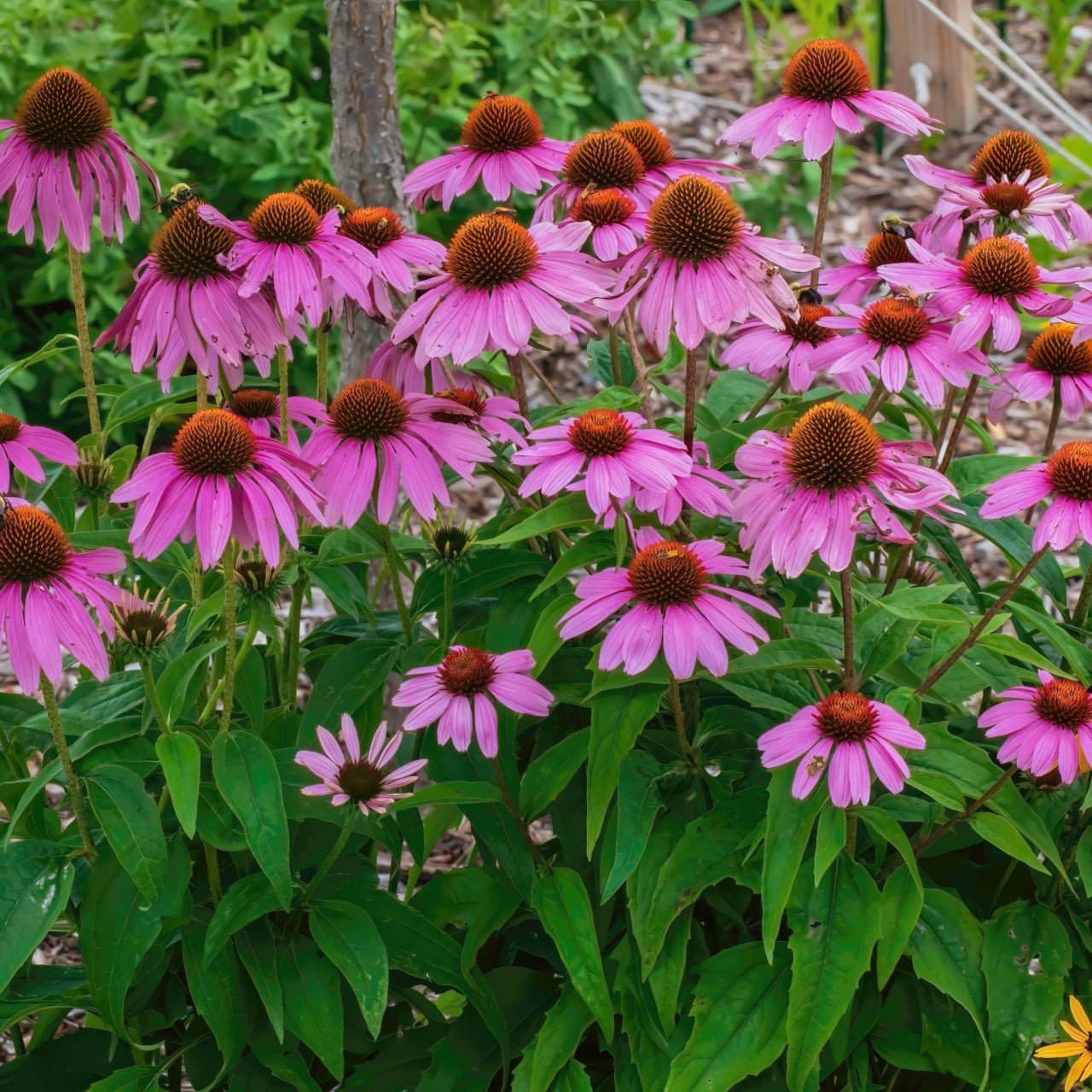Coneflowers, known for their resilience and beauty, have become a garden staple for those seeking low-maintenance, vibrant summer blooms. These wildflower-inspired perennials can add color to any landscape, attracting pollinators like bees, butterflies, and even birds, especially goldfinches. Their daisy-like blooms, with a raised cone center, radiate in shades ranging from pink and purple to white and yellow. In this guide, we'll explore some of the most common questions about growing coneflowers and ensuring they thrive all season long.
What month is best to plant coneflowers?
Timing your planting is critical to ensuring that coneflowers establish strong roots and flourish in your garden. The ideal time to plant coneflowers is in the spring or early fall. Spring planting gives the plant ample time to develop an extensive root system before the heat of summer sets in. If you prefer to plant in the fall, aim for a window that gives the coneflowers about six weeks to settle into the soil before the first frost. This allows the plants to establish themselves without being stressed by extreme weather conditions.

However, the best planting month can vary depending on your location. In cooler climates, late April to early May is ideal for spring planting, while in warmer regions, you can plant as early as March or wait until October to set them in the ground for fall. Regardless of when you grow, ensure the soil is workable and not waterlogged or frozen.
Do coneflowers like full sun or shade?
Coneflowers thrive in full sun, needing 5 hours of total sunlight daily to reach their full blooming potential. Full sun helps the flowers produce more robust blooms and supports the plant's overall health. When planted in areas with ample sunlight, coneflowers will not only bloom more prolifically but also develop sturdier stems that are less likely to flop under the weight of their blossoms.

That said, coneflowers can tolerate partial shade, especially in the heat of summer. Afternoon shade can protect the blooms and extend their flowering period in areas with scorching midday sun. If you live in a scorching climate, planting your coneflowers in a spot that receives morning sun and some afternoon shade might be the best way to prevent the plants from scorching or drying out.
Where is the best place to plant coneflowers?
The location you choose for planting coneflowers will largely depend on the amount of sunlight and the soil conditions. As these plants prefer full sun, select a spot in your landscape with lots of direct light. Garden borders, sunny meadows, or even raised beds are all great options for coneflowers. If you're planting in a mixed garden bed, consider placing coneflowers near plants that won't overshadow them or compete for light. Taller companion plants can offer shade, but make sure they don't block too much sunlight.
Soil quality is also an important consideration. Coneflowers are adaptable, but they do best in well-draining soil that's rich in organic matter. They can tolerate poor soil, but overly wet or saturated conditions can cause root rot. If you have clay in your ground, try amending it with compost or organic material to improve drainage. On the other hand, sandy soils will benefit from adding organic material to retain moisture while still allowing excess water to drain.

Another perk of coneflowers is their ability to attract beneficial wildlife. Birds, particularly finches, love their seeds, so if you want to support local bird populations, consider planting coneflowers where you can leave the dried seed heads in place after the flowers have faded. This gives birds easy access to the seeds and provides your garden with winter interest.
How can coneflowers keep blooming all summer?
Coneflowers are naturally long-blooming perennials, but with a few simple maintenance techniques, you can encourage even more blooms throughout the summer. One of the most effective methods is deadheading or removing spent blooms. Snipping off flowers past their prime encourages the plant to produce more buds instead of diverting energy to seed production. Deadheading keeps the plant looking tidy and extends its blooming period.
While deadheading is essential for continued flowering, leaving the last round of blooms to set seed can also be beneficial. Birds will feast on the seed heads during late summer and fall, so if you aim to attract wildlife, resist the urge to deadhead the final blooms of the season.
In addition to deadheading, consistent water, and occasional feeding can help boost flower production. Coneflowers are drought-tolerant once established, but during particularly dry spells, giving them a deep watering every week or so will keep them thriving. Be sure to water at the plant's roots instead of from overhead, as wet foliage can invite fungal issues.
Fertilizing is optional, especially if your soil is rich in organic material. However, if your coneflowers aren't performing as well as expected, applying a balanced fertilizer in the spring can boost them. Avoid over-fertilizing because it can cause excessive foliage growth at the expense of flowers.
Lastly, mulching around your coneflowers can help retain soil moisture and regulate temperatures, especially during the peak summer heat. Organic mulch, like bark or compost, also breaks down over time, enriching the soil and keeping your plants happy.
In conclusion, coneflowers are an excellent addition to any garden, providing beauty, wildlife support, and minimal fuss. You can enjoy vibrant coneflowers blooming from summer into fall with the correct planting time, proper sun exposure, and simple maintenance.
Read more

Discover Premium Fruit Trees from TN Nursery's Orchard Nursery Dreaming of growing a backyard orchard brimming with fresh fruit but don't know where to source viable “nursery fruit trees”? Lucki...

Having a garden can help make your home look very lovely. In most gardens, there are plants that you have that help provide a charming appearance.



